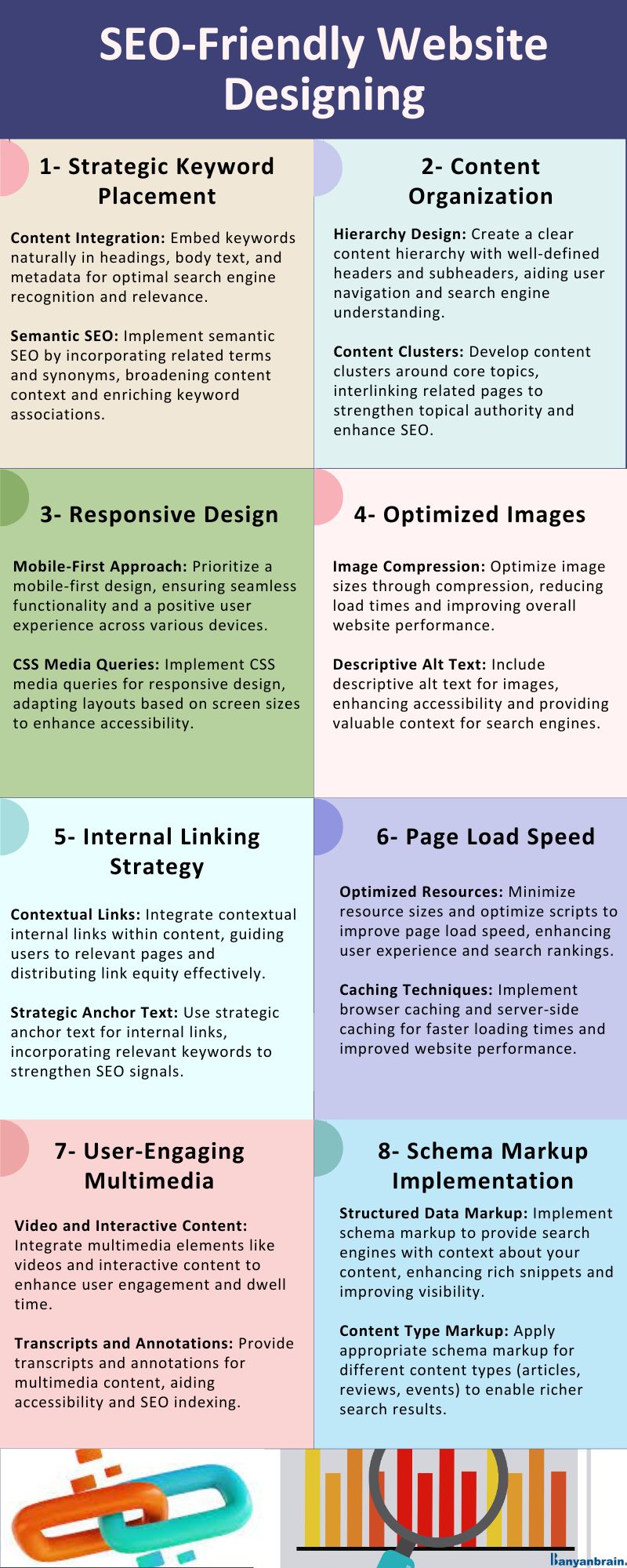SEO-friendly website designing requires a lot of technical competencies. Millions of websites are on the internet, but not all produce valuable results. According to a recent study, people create 380 websites every minute, and the rate keeps increasing every time. Businesses and individuals worldwide have now understood that having a website for a company or self-promotion is crucial in this culminating age of digitalization. What brings you here is also a quest for a good website. The blog will help you know the intricacies of a productive website.
A website gives an online presentation of your product, services, or ideas you put forward in front of the world, wanting them to buy from you. In this challenging era, you need a website that is navigable, user-friendly, and attractive.
The important aspect you need to consider before owning a website is the ‘WHY’ factor. Questions like why you need a website and why people should visit your website are essential to give a clear picture. People should visit your website to get relatable answers to their problems. There are millions of websites out there providing the same solution; thus, you should offer something unique. It takes a lot of hard work to get traffic to your website.
It doesn’t matter if you’re offering something unique or similar; the marketing strategy makes the product stand out. The first requisite of getting a high-quality website is to find a reliable website development company or an experienced web developer offering profound services.
The Biggest Mistake Most People Make
Website designing is vital in defining and establishing any company’s image. But a website is counted as an efficient one once it is optimized. The biggest mistake most people make is that they hire companies for website designing and later consult another SEO company for website optimization. You may not get potential results when you hire two different entities for a single goal. Therefore, you must employ a prominent Digital Marketing Company and ask them for both website development and site optimization services.
Key elements for an SEO friendly website
Quality Content
You might have heard people saying, ‘Content is the King’. As a matter of fact, ‘Quality content is the king’. For a website to run successfully, it is pivotal to fill in with quality content. Writing irrelevant, distracting, boring content won’t yield quality results. The content you’re feeding into it should be informative, original, and plagiarism free. Search engine bots prefer high-quality and purposeful content for rankings.
Content-Length
Not only the quality but the length of the content also matters a lot in determining the quality of a website. According to the Google algorithm, a web page content must consist of a minimum of 200 to a maximum of 1000 words. The formulated content should be informative, readable, grammatically correct, and user-oriented.
Readability
The higher the text readability, the greater the retention rate. If your website contains readable and catchy content, it will hold visitors long, allowing them to go through every corner of the website. Avoid using complex vocabulary, clutter, long sentences, stop words, etc. Be specific and clear, and use shorter sentences and active verb forms to address the readers.
Media
Media plays a vital role in making an SEO-friendly website. No one likes to go through plain text content without visual or audio effects. Web pages with images drive better customer engagement and boost website ranking. Therefore, add media like photos and videos to every piece of content you publish. Many of you might question that including video makes the website heavy. And it’s true to that fact. But you do not need to put videos on web pages; you can give a link redirecting to related YouTube videos when clicked.
Social Media
Social media marketing is today’s culminating way of promoting businesses to billions of users worldwide. First, build a solid social media presence on every surging platform, like Facebook, Twitter, LinkedIn, Pinterest, and Instagram. Then add your social media sites to the main website in a well-organized way that’s visible to the visitors enabling them to visit and share it seamlessly.
Navigation
Always try to make your website easily navigable. Easy navigation lets visitors know where they are and how they can easily transverse from one page to another by clicking on the menu. Include categories in the menu properly and make them clickable. Also, ensure every clickable image has alt text and your search features work seamlessly. You can also use a sitemap to improve website navigation.
Web-Friendly
To make your website run smoothly over the internet, it must share a strong camaraderie with the web, which means it must be web-friendly. With a diversity of browsers used worldwide, ensure that your website runs perfectly on every browser. Get in touch with your web developer and ensure that he utilizes Meta tags, alt tags, and other features to make it web-friendly.
Turnaround Time
A lot of people come up complaining about the long buffering time taken by their website. The longer your website takes to load or run, the lesser the user experience and the higher the website bounce rate. The minimum loading time should lie between 2 sec to 5 sec as people can wait this long, but if it takes longer, chances are more that users will leave your site after spending a short span on your website.
Interactive
A well-designed and optimized website can increase business profitability. The logo, graphics, designs, text, and features should correlate and contribute to making an interactive website. It will not only engage visitors but also give them a better user experience. Let your website talk to your customers, solve queries, and increase conversion rates. An interactive website can help in achieving an optimum level of traffic.
Formatting
The placement of text, content, images, icons, buttons, etc., plays a significant role in engaging customers. A poor format often confuses visitors about your intent. Visitors are less likely to read a post with poor formatting. While writing down the content, use H1, H2, H3, etc., tags to break down the content. Use bullets, italics, bolds, etc., to highlight important points.
Use Correct Grammar and Spelling
Most of us think that ranking doesn’t have to do anything with grammar and spelling. But as a matter of fact, it counts. Poor grammar or vocabulary errors give a terrible impression of your business to the customers. Visitors are more likely to consider your website irrelevant and leave it without visiting every page. Besides, the Search Engines may also penalize you for this. Why would it show a page with a grammatical error higher on SERP than the other pages with error-free content?
Use of External and Internal Links
Proper internal and external linking also adds to a good website’s list of vital elements. Add links to specific keywords in your content to direct visitors to another web page. It is a good strategy as it helps Google easily pass the link juice from different pages. The same applies to external linking. Add links to external sources on a specific keyword in the content to redirect traffic to your site. Avoid linking to unrelated pages, as it may get penalized by Google. Therefore, link to the sources related to your content or your reference.
Enable Easy Contact
After going through the entire corner of your website and finding it relevant, the next step visitors search for is ‘Contact’. A low-grade contact page can ruin your entire effort. An easily accessible contact page is a prerequisite for a better conversion rate. The contact page must contain your mobile number, physical address, email address, and links to social pages like Facebook, Instagram, Twitter, LinkedIn, etc. The unavailability of these things will create doubt in the visitor’s mind, and they are more likely to leave your site.
Add Testimonials and Reviews
Another thing you can do to make your website excellent and trustworthy is to add reviews and testimonials of clients, customers, and even employees. Displaying reviews and testimonials on your website helps build trust. Try to add some good comments and ask your clients to post their experience with your service. But remember that a positive review builds stronger trust amongst visitors; a negative review can have the opposite impact.
Conclusion
An SEO-friendly website lets your visitor have better experiences increasing the customer retention rate. At Banyanbrain, a leading Website Development company, we help you make optimized websites. Our talented pool of professionals includes creative designers and skilled developers that can turn your ideas into reality.







